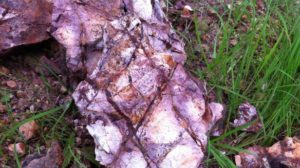Aztec launches exploration in Tombstone silver district

 Aztec Minerals Corp. [AZT-TSXV, AZZTF-OTCQB] on Monday said it has launched a $139,000 Phase 1 exploration program at its Tombstone Project in southern Arizona.
Aztec Minerals Corp. [AZT-TSXV, AZZTF-OTCQB] on Monday said it has launched a $139,000 Phase 1 exploration program at its Tombstone Project in southern Arizona.
Aztec says the Tombstone Project is underlain by the same Paleozoic limestone sequence that hosts Arizona Mining Inc.’s [AZ-TSX] massive Taylor zinc-lead deposit, which is located 65 kilometres west of Tombstone.
Arizona Mining recently agreed to be acquired by Australian company South32 Ltd. [S32-ASX, JSE, LSE, SOUHY-ADR) in a friendly takeover deal worth $1.8 billion.
While exploration at Tombstone is in the very preliminary stages, Aztec is hoping for a similar outcome as its launches a phase 1 program that it said will consist of structural and geological mapping, soil and rock sampling, trenching and geophysical surveying.
The focus of this exploration program is to better define the three styles of mineralization known to exist on the property and to identify top priority targets for drilling.
Aztec is a mineral exploration company focused on the discovery of large gold-copper deposits in the Americas. Cervantes is the company’s flagship asset. It is located in the Laramide porphyry belt approximately 265 kilometres southeast of the huge Cananea porphyry copper-molybdenum mine of IMMSA and 55 kilometres west of Alamos Gold Inc.’s [AGI-TSX, NYSE] Mulatos epithermal gold mine. The property is situated on private ranch lands accessed via dirt road from the town of Tonichi.
The district-scale Tombstone project is Aztec’s second property. Aztec has the option to acquire a 75% interest in the Tombstone project, which covers most of the famous Tombstone silver mining district.
Historic silver production in the district from 1878 to 1939 was estimated at 32 million ounces from several small vein mines. Aztec management views the district as highly prospective for the discovery of epithermal and carbonate replacement (CRD) orebodies.
The three types of mineralization at Tombstone include:
- High grade silver-gold-lead veins cutting Cretaceous Bisbee Group clastic sediments, which hosted historic mines at the Tombstone district.
- Bulk tonnage silver-gold epithermal stock-works also cutting Bisbee Group, on which an open pit heap leach mine was developed in the 1980s.
- Potential high grade, bulk tonnage CRD deposits, which could like below the Bisbee Group in the underlying Paleozoic limestones, a geological setting similar to Arizona Mining’s Taylor deposit.
Aztec says it is primarily interested in discovering new zones of epithermal and CRD mineralization because they typically form much larger mineralized bodies, that anything that has been previously discovered in the Tombstone area.
Aztec shares were unchanged on Monday at 22 cents. The 52-week range is 14.5 cents and 38 cents
